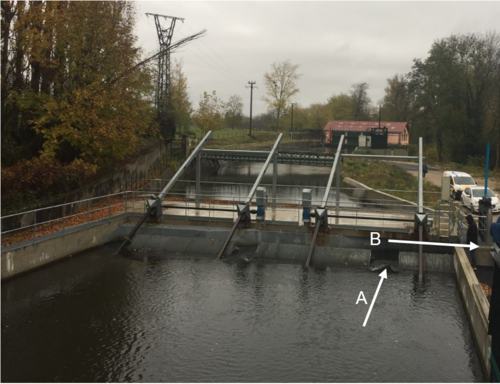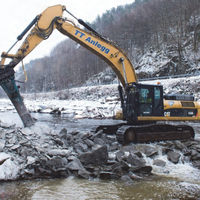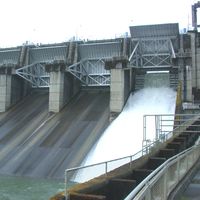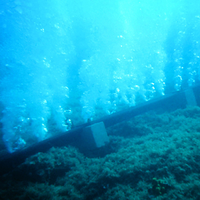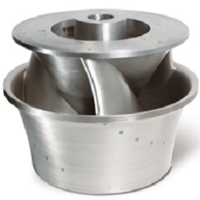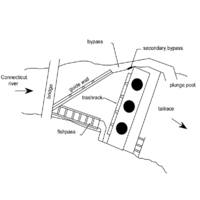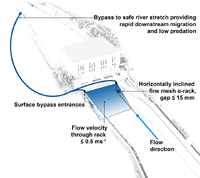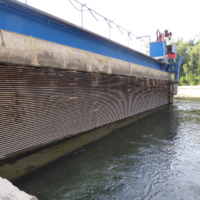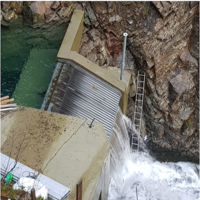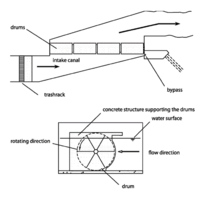Downstream fish migration
Introduction
While research and implementation of upstream migration solutions is extensive, and indeed often successful (Scruton et al., 2008), downstream migration of fish remains a major challenge in many river systems. The focus on downstream migration is a result of the increased awareness and knowledge that entrainment in hydroelectric turbines often involves high fish mortality (Larinier and Travade 2002, Fjeldstad et al. 2012, Calles et al. 2013). Safe downstream migration past hydropower structures and intakes is complicated because the fish tend to follow the bulk water flow, which often enters diversion tunnels and turbine intakes. At the same time, downstream migration is crucial for fish to access different habitats for feeding, shelter, spawning and for many fish species, to complete all stages of their life cycle. Hence, effective downstream migration passages should be provided, in particular, if fish can pass a hydropower barrier in upstream direction. The risk of fish injury and mortality from turbine blade strike is particularly harmful for adult fish since the likelihood for blade strike increases with fish length.
Fish migration delay at power plant reservoirs and forebays is challenging because a rapid and synchronized migration is often essential for the fish to complete the most favourable migration. Such delay can cause increased predation, energy loss and, at worst, fish choose not to migrate, which in turn gives ecological effects.
The challenge of safe downstream fish migration is global. Although traditional intake racks or screens themselves are not effective as complete fish barriers, downstream migration past the barrier can be significantly increased if a fish-adapted bypass is designed. Other solutions have also been shown to increase downstream fish survival past hydropower plants, such as guiding screens, louvres, wire screens and partial depth fine screen. Several international studies show that physical structures, such as fine-mesh racks with alternative escape routes and bypass arrangements provide very good results for downstream migration, for instance for brown trout and salmon, and has in recent years shown good results also for silver eels.
Downstream fish migration measures
NOTE: The downstream fish migration measures are still being completed.
The various measures to mitigate issues concerning downstream fish migration are listed below.
To be merged with new articles:
- Other fine mesh screens ex.jpg
